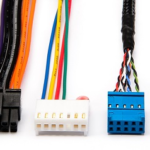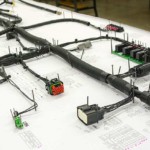“Due to COVID-19, manufacturing will experience five years of innovation in the next 18 months,” writes Anna-Katrina Shedlesky in a recent article for Forbes. Shedlesky, the CEO of a company that shows manufacturers how to reduce waste, tracks technology trends that can save you time and money. Efficiency and productivity were priorities before COVID-19, but the pandemic has put so much pressure on manufacturing that many companies are anxious to improve their operations now.
None of the trends that Shedlesky predicts are new. Cloud computing, industrial automation, and increased technology investments were all happening before COVID-19. Yet the pandemic is accelerating the rate of change. To compete and win, manufacturers must now “solve for distance”, as Shedlesky says. Although she doesn’t define what “distance” specifically means, it’s not just about physical distancing on the factory floor. “Distance” also applied to managers in back offices – or in home offices.
Let’s take a closer look at three key trends that Shedlesky says will transform electronics manufacturing.
Cloud Computing
Cloud computing uses a network of remote servers that are hosted on the Internet to store, manage, and process data. It provides greater accessibility and visibility than storing files on a desktop computer or a company server. The cloud also enables manufacturers to aggregate data from across disparate platforms and to implement artificial intelligence (AI), which can be used to identify defects during product development and to diagnose problems with production quality – all without visiting the factory floor.
Industrial Automation
Electronics manufacturing is often a manual process where workers are in close proximity to one another. During assembly, hundreds of hands may touch a complex product. In facilities where line space is at a premium, the physical distance between employees may be as little as a few feet. Automation reduces the number of “touches” and doesn’t require people to work shoulder-to-shoulder. It can’t replace the skill and dedication a team, but machines aren’t susceptible to injury or illness either.
Technology Investments
Cloud computing and automation aren’t the only changes on the horizon, but all new technologies require a financial investment. For manufacturers who are wary of buzzwords, urgent needs are more powerful than residual skepticism. “Manufacturers will be looking for solutions,” Shedlesky writes, “that directly solve their pain points, can be implemented quickly (days and weeks, not months), and have the potential for long-term, post-COVID-19 impact”.
What are your “pain points” during COVID-19? Are you looking for an electronics manufacturer that’s a true partner instead of a just a supplier? Contact SHINE to learn more about us and how we can help you.






